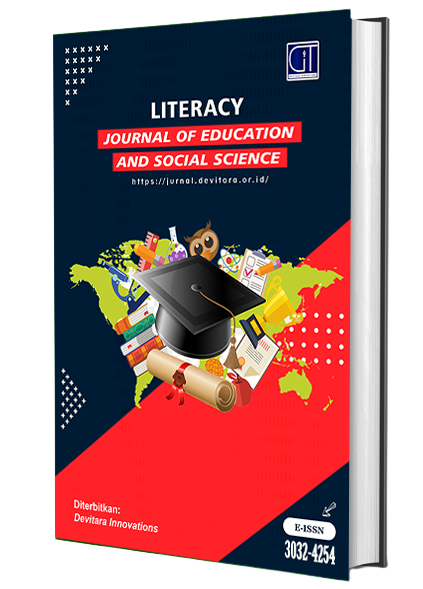Improving Reading Skills In Various Dimensions
Keywords:
Reading Learning Strategies, Educational Technology, Critical Reading SkillsAbstract
This research explores various reading learning strategies aimed at improving reading skills among students. By adopting a descriptive qualitative approach through literature study, this research identifies and analyzes the effectiveness of the SQ3R method, skimming and scanning techniques, as well as the application of critical and creative reading in educational contexts. Additionally, this research considers the role of technology in reading learning, highlighting how reading learning apps and software can motivate students and support inclusive and adaptive teaching. The findings from this study indicate that the integration of technology in reading instruction not only increases student motivation but also facilitates more personalized and effective learning. A combined approach between extensive and intensive reading has been proven to be effective in enriching reading comprehension and fluency. This study also emphasizes the importance of developing critical and creative reading skills to prepare students to face literacy challenges in the 21st century. The implications of this research offer valuable guidance for educators in designing and implementing comprehensive reading instructional strategies, which align with current educational standards and support the development of effective educational policies.
References
Creswell, J.W. (2014). Research Design: Qualitative, Quantitative, and Mixed Methods Approaches.
Duke, N.K., & Pearson, P.D. (2002). Effective practices for developing reading comprehension. In What research has to say about reading instruction.
Edyburn, D.L. (2010). Would You Recognize Universal Design for Learning If You Saw It? Ten Propositions for New Directions for the Second Decade of UDL.
Gee, J.P. (2003). What Video Games Have to Teach Us About Learning and Literacy.
Griffin, P., McGaw, B., & Care, E. (2012). Assessment and Teaching of 21st Century Skills.
Larson, L.C. (2009). E-Reading and E-Responding: New Tools for the Next Generation of Readers.
National Institute of Child Health and Human Development. (2000). Report of the National Reading Panel: Teaching children to read.
Organisation for Economic Co-operation and Development (OECD). (2019). PISA 2018 Results.
Sipe, L.R. (2008). Storytime: Young Children's Literary Understanding in the Classroom.
Xie, Y. (2020). Adaptive Learning Technology: What It Is, How It Works, and Why It’s Being Used More Than Ever

